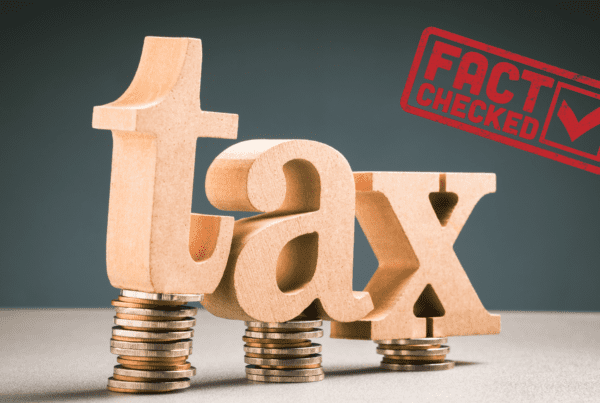The Commissioner of Taxation recently released a taxation ruling, TR 2018/3, which provides guidance on reporting profits derived and losses incurred from long-term construction contracts. While the understandings are not vastly different to a previous release from 1987 (IT 2450), it is a healthy reminder that long-term construction contracts must be correctly accounted for to ensure tax payments are suitably timed.
Who does this apply to?
‘Long-term construction contracts’ are contracts where construction works extend beyond one income year. This includes contracts of less than 12 months’ duration but straddling two income years. For example, a contract that commenced in June 2017 and completed in September 2017 would considered a long-term construction contract, as it straddles both the 2016–17 and 2017–18 income years).
Construction takes its ordinary meaning. The taxation ruling specifically noted the following it applies to:
Construction of:
-
- Buildings;
- Bridges;
- Dams;
- Pipelines;
- Tunnels;
- Other civil engineering projects; and
- Major plant items:
- Ships
- Transport vessels
Activities of:
-
-
-
- Demolition;
- Dredging; and
- Heavy earth moving projects
-
-
Other similar contracts in associated fields:
-
-
-
-
- Air conditioning contracts;
- Major electrical wiring & rewiring contracts;
- Major refurbishments of hotels, stores; and
- Major construction management contracts.
-
-
-
A long-term construction contract does not include a contract of sale and supply of trading stock.
What is the Impact?
Acceptable Methods
The Ruling confirms that there are two methods that can be used to record profits and losses on long-term construction contracts:
– The Basic Approach
– The Estimated Profits Approach
Once one method is chosen, it must be applied consistently throughout the entire period of the contract.
The Basic Approach
The Basic Approach involves each progress and final payment are reported as assessable income when received or receivable, and expenditure deducted when incurred.
Additionally, amounts billed or billable to customers in a year for work carried out and certified as acceptable for payment are to be recorded as assessable income. This is to ensure that a taxpayer can not defer assessment of contract income by not billing until after the close of the income year nor can it be refrained by postponing the obtaining of certification from the relevant party.
Under the basic approach:
– Up front payments are assessable income when received
– For retentions (where an amount is retained under a retention clause):
> It should not be included in assessable income until the taxpayer is entitled to received them from the customer
> Equally, the contractor cannot claim a deduction for amounts retained from sub-contractors until they are due to the sub-contractor.
– Bank guarantees should not reduce the assessable amount. If a contractor is required to pay an amount to the bank for a guarantee, the amount paid will qualify for an income tax deduction when it is paid.
The Estimated Profits Approach
The Estimated Profits approach involves the spreading the ‘ultimate profit or loss’ on a contract over the years taken to complete the contract.
‘Ultimate profit or loss’ refers to the overall taxable income expected to arise from a particular contract. Total receipts to be regarded as assessable income and tax deductions for expected losses and outgoings. In effect it is notional taxable income which may be spread over the years taken to complete the contract.
This method removes the timing issues of up-front payments, advance progress payments and amounts withheld under retention clauses, because it is focused on the result.
In assessment of costs deductibility, the following are considered not deductible:
– Claims for reserves;
– Unconfirmed wet weather costs; and
– Industrial dispute delays.
Additionally, tender costs are not taken to be deductible against the contract. However, it is permissible to account for probably costs to remedy defects during the maintenance period.
Allocation
Income and losses must be allocated to a particular income year. To allocate the notional taxable income over years, there are different approaches depending on the contract type:
| Cost plus contract | Determined by ascertaining the percentage of costs incurred and cost charged. |
| Fixed price contract | Determined on a year-by-year basis |
| Any other contract | Any other method can be used if the above 2 methods are not considered acceptable. |
Changes over the contract period
Estimates of costs and forecast of profit are likely to change throughout the construction. If the overall costs do change, the assessment is to be adjusted from year-to-year as follows:
| Year 1 | Year 2 | Year 3 | |
| (a) Estimated notional taxable income | $500 | $400 | $300 |
| (b) Percentage of contract completed | 20% | 60% | 100% |
| (c) Notional income to be returned = (a) × (b) | $100 | $240 | $300 |
| (d) Less income already returned | $0 | $100 | $240 |
| Assessable income | $100 | $140 | $60 |
Unacceptable Methods
The ruling confirms that the ‘completed contracts method’ remains unacceptable under the income tax law. The ‘completed contracts method’ is where all profits and losses are recorded only upon completion. Similar approaches, such as claiming deductions each year but only reporting income at the completion of the project, are similarly unacceptable. The ATO requires assessable income to be determined from year to year.
What to do Next?
Appropriate accounting of long-term construction contracts can derive hidden value in the form of reduced tax payments and even potential income tax refunds where contracts or projects have fallen over.
As each construction business seeks to improve cash management, getting the right advice about reporting for tax can be a positive investment for now and into the future.
We help tradies make meaningful, profitable decisions with real time business data.
If you would like further information on how these changes may impact you, please contact us on 9802 2533.
Article by Matthew Dunn







